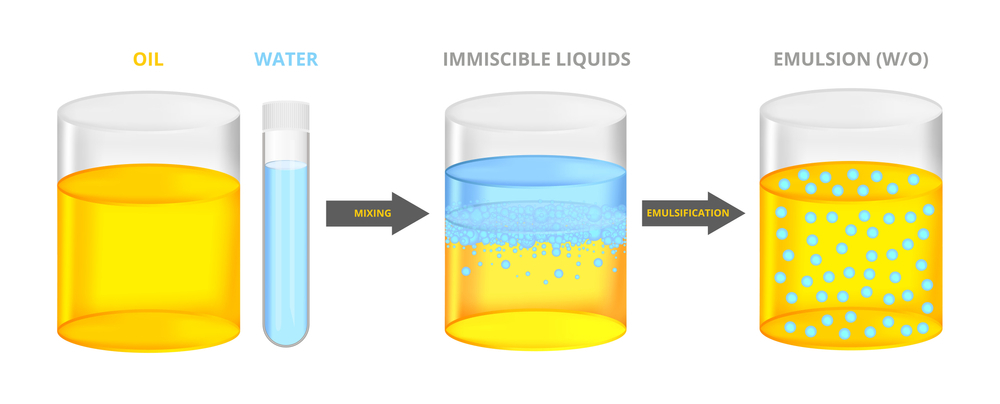There are many identification test for emulsion discussed as below:
Table of Contents
Identification test for emulsion:
1. Dilution Test:
Principle: All the emulsions are easily diluted with their continuous phase /dispersion medium.
Test: Divide the sample emulsion into two parts and collected them in a suitable test tube to the one part add sufficient water and to the other part add sufficient oil and observe the results.
Observation:
- If the sample emulsion is easily diluted with water indicate the type of emulsion is oil in water or separation of water as a layer indicates the type of emulsion is water in oil .
- If the sample emulsion is easily diluted with oil indicate the type of emulsion is water in oil or separation of oil as a layer indicates the type of emulsion is oil in water.

2. Dye test
Principle: Respective soluble dye makes the colour to the respective phase viz ., water-soluble dye makes the colour to the water phase and oil-soluble dye makes the colour to the oil phase.
Test: Triturate a small quantity of sample emulsion with either water-soluble dye like amaranth or oil-soluble dye like scarlet blue. In both the case, a small sample is mounted on Compound microscope and observes the results.
Observations:
1) Case with water-soluble dye (Amaranth)
If red coloured droplets are observed against colourless background indicate the type of emulsion is W/O or if colourless droplets are observed against red coloured Background indicate the type of emulsion is O/W.
2) Case with oil-soluble dye (Scarlet blue)
If blue coloured droplets are observed against colourless background indicate the type of emulsion is O/W or if colourless droplets are observed against blue coloured background indicate the type of emulsion is W/O.
3. Flouroscence Test:
Principle: When oils are exposed to ultraviolet radiations they get fluorescence.
Test: A small quantity of sample emulsion is allow to exposing to ultraviolet radiation and observes the results.
Observations:
Fluorescent droplets are observed against colourless background indicating the type of emulsion is O/W emulsion or fluorescent background against colourless droplets indicating the type of emulsion W/O emulsion.
4. Cobalt chloride paper test:
Principle: when cobalt chloride comes in contact with water, it turns blue in colour into pink colour.
Test: for the test, a strip of Whatman filter is impregnated with cobalt chloride solution for 10 min and dries the strip become blue in colour. This blue strip is dipped in sample emulsion for 5 min and dry and observe the result.
Observation:
If the blue cobalt chloride strip turns completely pink, indicate the type Of emulsion is O/W.
If pink spots against blue background indicated the type of emulsion is W/O.
5.Formation of creaming:
Test: sample emulsion is heated in a suitable test tube for 10 min and observes the result
Observation:
If upward creaming is forming indicate the type of emulsion is O/W.
If downward creaming is forming indicating the type of emulsion is W/O.
6. Conductivity test:
Principle: water is good conductivity of electricity, hence an emulsion in which water forms a continuous phase acts as a conductor.
Test: a small low striking voltage neon lamp connected in series with a bayonet fitting plug and two electrodes Eg. Two-piece of copper wire. Dip these electrodes in a sample emulsion, apply the Current and observe the results.
Observation:
If the neon lamp glows continuously indicating the type of emulsion is O/W.
If the neon lamp flickers spasmodically indicating the type of emulsion is W/O.